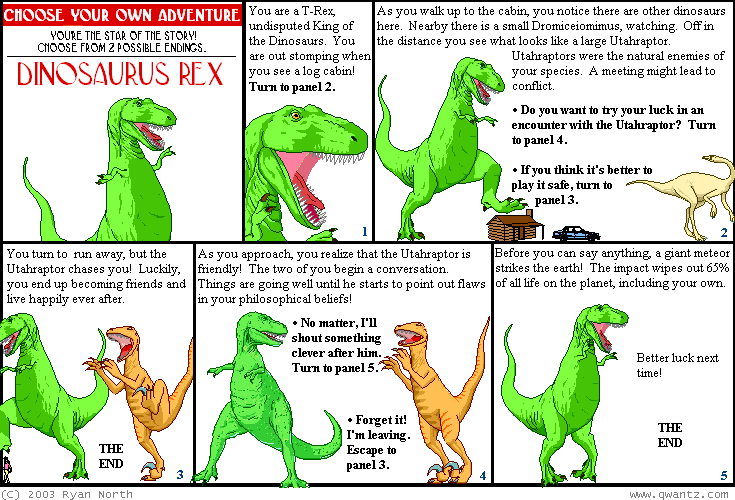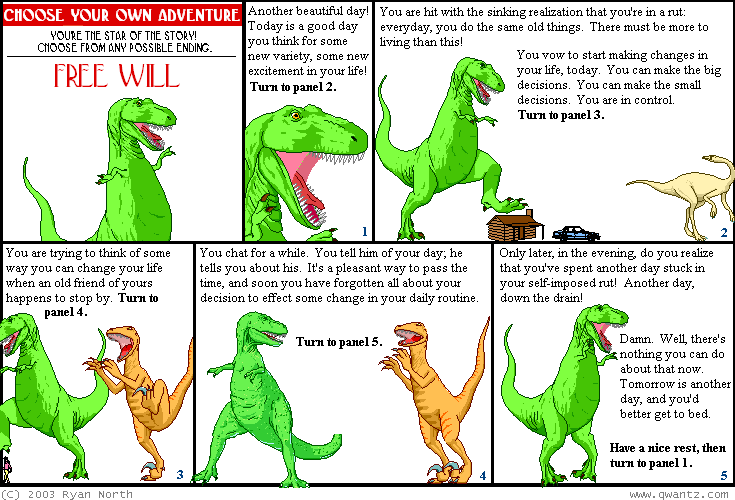In one of GK Chesterton's Father Brown mysteries, the sound priest is called out to an old castle where a murder has been committed. When he arrives, Flambeau introduces him to the collection of evidence they have found.
The core of the tale we could imagine; it is the fringes that are mysterious. By no stretch of fancy can the human mind connect together snuff and diamonds and wax and loose clockwork.”We begin to see that facts, that evidence, is nothing without a story. Facts are mere points which a story must connect to form an intelligible picture. To illustrate this point, here is a seemingly irrelevant cartoon I recently came across (one that I will deftly weave into my web).
“I think I see the connection,” said the priest. “This Glengyle was mad against the French Revolution. He was an enthusiast for the ancien regime, and was trying to re-enact literally the family life of the last Bourbons. He had snuff because it was the eighteenth century luxury; wax candles, because they were the eighteenth century lighting; the mechanical bits of iron represent the locksmith hobby of Louis XVI; the diamonds are for the Diamond Necklace of Marie Antoinette.”
Both the other men were staring at him with round eyes. “What a perfectly extraordinary notion!” cried Flambeau. “Do you really think that is the truth?”
“I am perfectly sure it isn’t,” answered Father Brown, “only you said that nobody could connect snuff and diamonds and clockwork and candles. I give you that connection off-hand. The real truth, I am very sure, lies deeper.”
He paused a moment and listened to the wailing of the wind in the turrets. Then he said, “The late Earl of Glengyle was a thief. He lived a second and darker life as a desperate housebreaker. He did not have any candlesticks because he only used these candles cut short in the little lantern he carried. The snuff he employed as the fiercest French criminals have used pepper: to fling it suddenly in dense masses in the face of a captor or pursuer. But the final proof is in the curious coincidence of the diamonds and the small steel wheels. Surely that makes everything plain to you? Diamonds and small steel wheels are the only two instruments with which you can cut out a pane of glass.”
The bough of a broken pine tree lashed heavily in the blast against the windowpane behind them, as if in parody of a burglar, but they did not turn round. Their eyes were fastened on Father Brown.
“Diamonds and small wheels,” repeated Craven ruminating. “Is that all that makes you think it the true explanation?”
“I don’t think it the true explanation,” replied the priest placidly; “but you said that nobody could connect the four things. The true tale, of course, is something much more humdrum. Glengyle had found, or thought he had found, precious stones on his estate. Somebody had bamboozled him with those loose brilliants, saying they were found in the castle caverns. The little wheels are some diamond-cutting affair. He had to do the thing very roughly and in a small way, with the help of a few shepherds or rude fellows on these hills. Snuff is the one great luxury of such Scotch shepherds; it’s the one thing with which you can bribe them. They didn’t have candlesticks because they didn’t want them; they held the candles in their hands when they explored the caves.”
“Is that all?” asked Flambeau after a long pause. “Have we got to the dull truth at last?”
“Oh, no,” said Father Brown.
As the wind died in the most distant pine woods with a long hoot as of mockery Father Brown, with an utterly impassive face, went on:
“I only suggested that because you said one could not plausibly connect snuff with clockwork or candles with bright stones. Ten false philosophies will fit the universe; ten false theories will fit Glengyle Castle. But we want the real explanation of the castle and the universe.




Here is a comic (a hilarious, though perhaps not always appropriate, strip by the way) that uses the same basic images in each strip, but populates the frames with different words each time and manages to form almost coherent storylines. My point? The basic facts my remain the same in each strip, but each one tells a different story.
At the same time, just telling a story (even if it's a good, rational story), as Father Brown points out above, does not make it true. The story must fit, somehow, into the other stories going on around us (NT Wright's New Testament and the People of God is good here). It must fit with what we already know, otherwise the wineskins will burst.
To see what I'm saying here, we might have to take a small step back. When I'm talking about storytelling here, I'm not just thinking about detective stories or literature, but about science, art, history, psychology, etc. The characters might be different in each one, but the necessity of a good story is firm in all of them. Now this may seem like I'm riding roughshod over the different disciplines, and it might be that I am. But listen to what I'm not saying. I'm not saying that we should study each category the same. I'm not saying that methods can apply themselves across subjects. The methods of studying a subject should always be limited to those appropriate for that subject. What I am saying is that scholarly study is always done by storytellers or their critics (who often are poorly trying to tell a subversive story).
PS Sorry for the poor writing here, but I just needed to get some of this out.
Hey Nick, I just wanted to say goodbye since I didn't get to last Sunday.:) And I'm so glad you and Andrew came over for dinner Saturday night. We really enjoyed it...hopefully you did as well.
ReplyDeleteI greatly enjoyed your venting on the subject... to think of science (and other methods of study) as a story is very interesting. The comic strip beautifully illustrated the narrative weaving of facts to make a whole picture/theory/study/story etc.
ReplyDelete